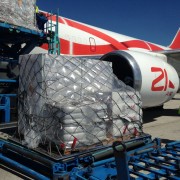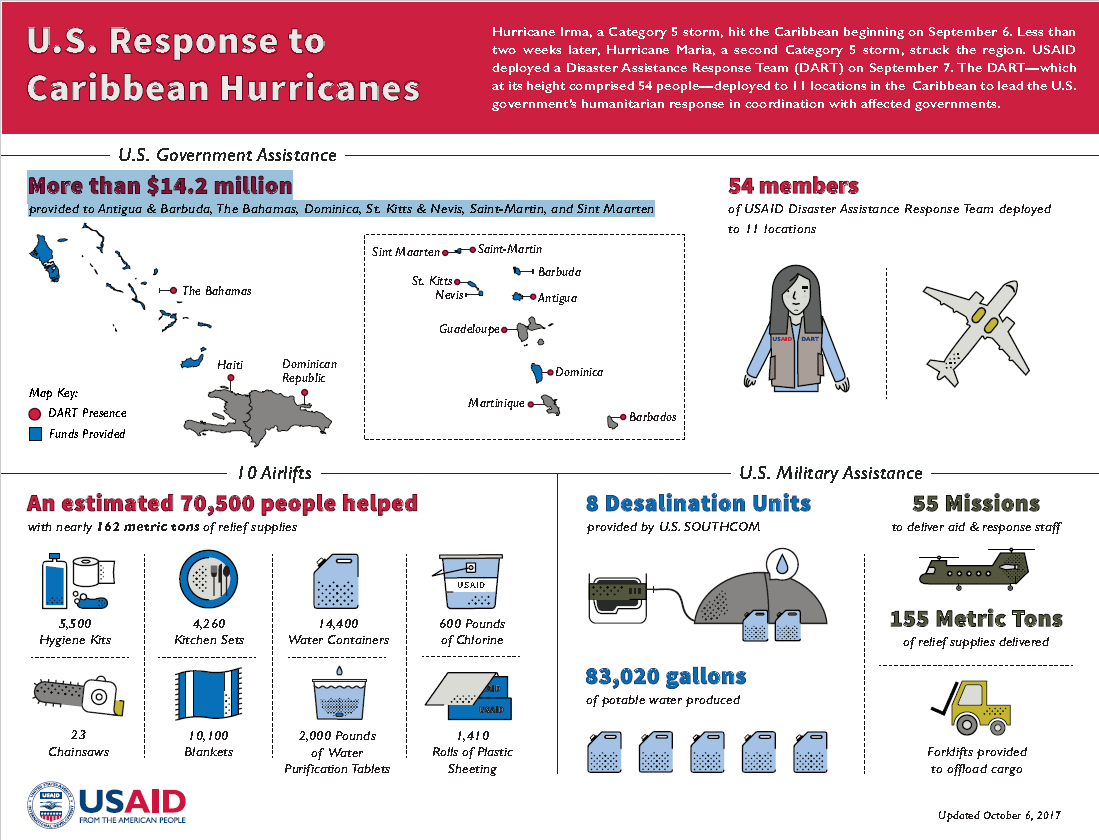As we help our neighbors in Mexico and the Caribbean, I want to make clear that America is and will remain the world’s leading humanitarian donor. Whether it’s responding to an earthquake, drought, or conflict, America is committed to standing shoulder to shoulder with people in their hour of need. It is who we are as Americans. While we respond to immediate crises, America is also providing lifesaving humanitarian assistance to those suffering as the result of famine, food insecurity, drought, and conflict, all of which is driving the greatest movement of people since World War II. In the face of this unprecedented need, we are continuing to show leadership.
Hurricane Maria passed directly over the island of Dominica on the night of September 18 as a Category 5 storm on the Saffir-Simpson Hurricane Wind Scale. Widespread communications outages have hampered efforts to verify conditions on Dominica, and initial reports indicate extensive infrastructure destruction and at least seven deaths. USAID/OFDA is providing an initial $100,000 to meet immediate humanitarian needs on the island and plans to deploy staff to Dominica as soon as possible.

Hurricane Irma — the strongest Atlantic hurricane on record — unleashed catastrophic rain, wind, and storm surges across the Caribbean, leaving a trail of devastation from Barbuda to Cuba. Here’s an inside look at USAID’s disaster relief efforts.
Hurricane Maria—a Category 5 storm on the Saffir-Simpson Hurricane Wind Scale—is forecast to affect the Leeward Islands beginning on September 18, according to the National Hurricane Center (NHC). The hurricane is forecast to bring sustained winds of 160 miles per hour (mph), 10–15 inches of rain, and storm surge of up to 9 feet to affected areas. The substantial rainfall is expected to trigger flash flooding and landslides, particularly on islands already saturated by rains from recent hurricanes Irma and Jose.








Comment
Make a general inquiry or suggest an improvement.